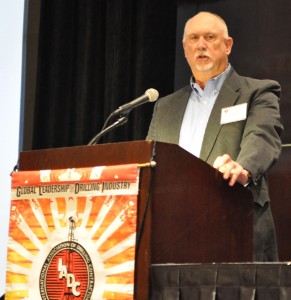Empowered crews enhance well control competency
By Katherine Scott, editorial coordinator

To learn from the past and improve well control competency at the wellsite, the industry needs to reemphasize the basics to its crews, said Steve Vorenkamp, general manager of training for Wild Well Control, in a presentation at the 2012 IADC Drilling Onshore Conference and Exhibition on 17 May in Houston. The land drilling industry is doing a lot of good and getting 95% of it right, but it’s the remaining 5% that demands more attention. We have to focus on “those things that got away from us,” he said.
Mr Vorenkamp said he believes that 85% of blowouts happen when we forget the basics – procedural problems caused by a lack of understanding of the fundamentals of well control. This means only 15% of losses are due to equipment problems. “I can fix equipment. I can redesign equipment. That’s the easy thing to do,” he said. “But how do we get past forgetting protocols or taking risks that we shouldn’t have?”
In order not to repeat past mistakes, change must be instigated by educating and empowering the next generation of employees, he continued. “We’ve got to transfer that knowledge,” Mr Vorenkamp said. The “stop action” belief must be transferred all the way down to the crews “so that they actually believe they can stop action when they know that they should. … We’ve got to do a better job of empowering the people, and it’s difficult when we’re building a rig a week to satisfy demand.”
Giving crews a supportive environment could also work to minimize gaps in well control awareness. “Crews have got to believe that they are being supported so that their feedback and their honesty come through. From that you’re able to determine as a group what needs to come next to fill that void.”
Incorporating skills in well control awareness where they operate in a practical sense is certainly something that land drillers should consider, Mr Vorenkamp continued. “How do we get out there and do a quantitative/qualitative assessment of how these crews operate, from a competency standpoint, where they work? Not in a perfect classroom, with a perfect simulator and everything’s fun, but when it’s tight and uncomfortable,” he said. If we can provide that type of real-world, practical, job-specific practice for the crews, “I think we will get that 5% minimized. I really do.”
Further, well control has to be continuously reviewed on site. “Crews have got to be focused, because when they’re on that job, it’s not just how fast they’re drilling, it’s the entire aspect of what can occur at any given moment,” he said.
To motivate companies to take well control competency a step above, Mr Vorenkamp emphasized that there is a cost benefit to preventing the loss of a rig in a blowout. “What does a rig cost today – $15 million? $20 million? Half a billion? How many events can you afford and say that, I don’t have the money for training?”




